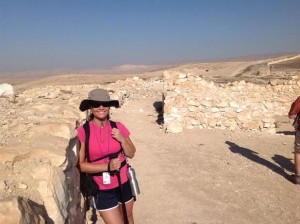This past Christmas Eve, I taught about Christmas using a Menorah. Here is the video clip of the service.
Here is the message manuscript from that talk.
“You might be surprised to see a Jewish Menorah at a Christmas Celebration. The designs for the Menorah were given to Moses by God in Exodus 25. When Jesus sits down with his disciples, he explains to them in Luke 24:27 27 and beginning at Moses and all the Prophets, He expounded to them in all the Scriptures the things concerning Himself. Jesus told them that everything Moses wrote was actually about Him.
You might be surprised to see a Jewish Menorah at a Christmas Celebration.
This is traditionally displayed in a Jewish home or a tabernacle and has symbolic meaning to their culture and tradition. God gave his people very specific instructions for hammering out a lampstand of pure gold. He goes into detail explaining that six branches are to extend from the lampstand outward, three on each side of the lampstand. Then in greater detail he instructs the shape of each cup and branch, emphasizing that each branch should be of one piece with the lampstand.
For the believer today, this sacred symbol holds significant meaning. At first view, we recognize Christ as the “light of the world” and that his church is to be united with him as One. God designed this masterpiece and commanded that his people use it. Today, we’ll unpack its meaning and symbolism as instructed through the Word of God.
A lampstand
That means this Menorah, according to Jesus, points to Him. How can that be? Well, one more verse to consider, Col 2:16 says that the Festivals given by God are merely a shadow of the substance of Christ.
The Menorah is a candle to light to the world. It has 7 lights which remind us that 7 is the number of God, making the world in 7 days, and setting up 7 feasts for His people to celebrate through the Year. What are the 7 Feasts, and how do they point to Jesus Christ?
The first is Passover, when God brought deliverance to His people from the bondage of Egypt by sacrificing a perfect lamb. Jesus came and said that He was the Passover lamb that would be sacrificed for us to be delivered from spiritual bondage. Jesus died on the cross on the actual Passover date.
(Freedom)
The second is Unleavened Bread, a feast day when you were to eat bread that didn’t rise while you prayed for God to “bring fruit out of the ground.” for the next day of firstfruits. This was the day Jesus was in the ground, literally, after his death awaiting God to answer the prayers of people praying for God’s provision to raise him out of the ground. (Answer to Prayers)
The third is First Fruits, three days after Passover, when God’s people were to bring God the first thing out of the ground from the spring harvest months earlier. Jesus is called the First Fruit, and was raised from the dead on the first fruit day because He was the “first thing out of the ground” at His resurrection. (Resurrection)
The fourth feast is Pentecost, Fifty days after First fruits, celebrating the date Moses came down and gave God’s Word to the People. Fifty days after Jesus Resurrection, HIS spirit came down and gave God’s Word to the People to teach others about God. (Word)
The fifth feast is Trumpets, a time of blowing the Shofar. Trumpets were often used as a celebration of the returning king. Jesus said that he will return to earth one day as a king with the sounds of trumpets. (Returning King)
The sixth feast is Day of Atonement, the day the priest went into the Holiest place and put his hands on a “scapegoat” to take the consequences of our wrong doing for us. You would place your hands on the goat symbolizing the blame transfer from us to the goat, and it would be released into the wilderness as a symbol that you had escaped punishment. Jesus claims to be our scape goat and priest. He goes into the presence of God, and places all our wrong doing on Himself. (Priest and Scapegoat)
The seventh feast is Tabernacles, was celebrated with a Menorah. It was a longing for God’s light to come and dwell (or tabernacle) among his people. God said it was to be a day of rejoicing and celebration among the people. When the angel spoke of Jesus’s name as Emmanuel, God with Us.
18 Now the birth of Jesus Christ was as follows: After His mother Mary was betrothed to Joseph, before they came together, she was found with child of the Holy Spirit. 22 So all this was done that it might be fulfilled which was spoken by the Lord through the prophet, saying: 23 “Behold, the virgin shall be with child, and bear a Son, and they shall call His name Immanuel,” which is translated, “God with us.”.
In a young virgin woman would be the place god would tabernacle with us…. God would be with us as Emmanuel… He was the answer to prayers for generations…
For more information, go to www.godonomics.com

